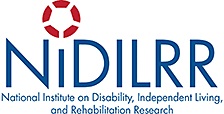NIDILRR Grant Number: 90DP0043
Funding Cycle: October 1, 2017 to September 30, 2022
Severe burns are one of the most complex forms of trauma injury. Promoting survival, recovery, and rehabilitation of burn patients is extremely challenging. Long-term rehabilitation is expected, and significant disability is common. Rehabilitation focuses on major problematic areas of both recovering normal physical function and providing psychosocial adaptation. This situation becomes more complex in pediatric patients where consideration must be given to physical growth and development, cognitive development and differing motivations at each developmental period, and the longer life span over which rehabilitation interventions are likely to affect outcome. However, in adults, similar major problematic areas of both recovering normal physical function and providing psychosocial adaptation exist. At the Blocker Burn Unit and at Shriners Children’s-Texas Hospital, we have endeavored for more than 40 years to develop new techniques to improve the outcome of adults and children with major burns. Our comprehensive treatment plans are directed toward achieving the best possible long-term outcome in our patients. We have a strong history of conducting excellent research that translates into the best care we can provide to improve physical, functional, and psychological outcomes from burn injury.
We treat and follow a significant number of burn survivors with severe injuries. The problems addressed in this proposal are those that would prevent these patients from enjoying normal lives. A hypermetabolic/catabolic response occurs from severe burn injury and lasts up to 1-year post-burn. This stress response is characterized by tachycardia and cardiac dysfunction, increased resting energy expenditure, increased protein catabolism and peripheral protein wasting. We have previously assessed the efficacy of long-term use of propranolol in the treatment of burn injury (adults and children) with endpoints of improved survivability, improved cardiovascular condition, greater energy, improved muscle endurance, improved growth in children, and decreased anxiety. We have also evaluated rehabilitative outcomes for children with burns ≥40% total body surface area burned by combining an anabolic agent (oxandrolone or propranolol) with a 3-month intensive outpatient rehabilitation program. The supervised exercise program has shown to be effective in ameliorating effects of the hypermetabolic response. We have also assessed the effectiveness of combining the anabolic agents and the exercise program with the expectation that the effects will be additive and will improve linear growth, bone mass, muscle strength, lean body mass, physical function, and general well-being. In the present cycle, we propose to collect short-term follow-up information (i.e., pre-burn, discharge, 6 months, 1 year, 2 years after their burn) on participants enrolled in the BMS database. Similarly, we have a collaborative study with the 3 other BMS centers. The objectives for this project are to: (1) collect long-term follow-up information (i.e., 5, 10, 15 and 20 years after their burn) on participants enrolled in the BMS database. The aims in this current cycle of funding are: Aim 1-To assess quality of life in adults with severe burns. Quality of life to be assessed using the Veterans Rand-12 item survey (VR-12). The hypothesis being that adult patient with severe burns receiving anabolic agents would have significantly higher (better) VR-12 scores than scores from patients NOT receiving anabolic agents. Aim 2 (CHILDREN ONLY): To assess physical function using the PROMIS-25 Mobility (4a). Hypothesis is that patients receiving anabolic agents will have significantly higher (better) PROMIS-25 Mobility scores than scores from patients NOT receiving anabolic agents. This BMS center is well suited to conduct this study because of our experience, patient population, and expertise in research.

In 1993, The National Institute on Disability, Independent Living, and Rehabilitation Research (NIDILRR) sponsored three burn injury model systems for a period of four years. In 1997, NIDILRR enhanced the above priorities to include children. Now, there are four Burn Injury Rehabilitation Model Systems in the United States.
Model Systems are specialized programs of care in spinal cord injury (SCI), traumatic brain injury (TBI) and burn injury, funded by the National Institute on Disability, Independent Living, and Rehabilitation Research (NIDILRR) to pool information and conduct research with the goal of improving long-term functional, vocational, cognitive and quality-of-life outcomes in these populations. NIDILRR grants model system designation to institutions that are national leaders in medical research and patient care and provide the highest level of comprehensive specialty services, from the point of injury through rehabilitation and re-entry into full community life.